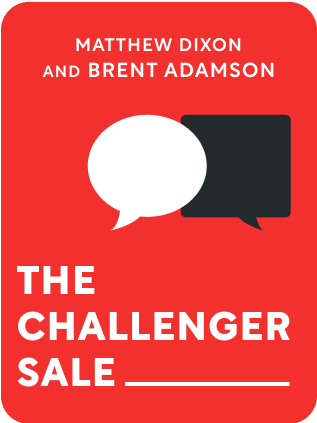

This article is an excerpt from the Shortform summary of "The Challenger Sale" by Matthew Dixon and Brent Adamson. Shortform has the world's best summaries of books you should be reading.
Like this article? Sign up for a free trial here .
What is the difference between SPIN Selling vs the Challenger Sale Model? Which is better?
Both sales strategies work. But the main difference in SPIN Selling vs The Challenger Sale Model is that Challengers teach, while SPIN sellers ask questions. These two sales models take difference approaches, but when it comes to SPIN Selling vs The Challenger Sale Model, it will be up to the rep to decide what works for them and what works for customers.
Overview of SPIN Selling vs The Challenger Sale Model
As you read through the differences between SPIN selling vs The Challenger Sale model, think about the differences between them, and keep in mind the teaching pitch vs. the question framework. You’ll notice that both focus on finding solutions for customers, but differ when it comes to how to approach finding that solution.
Characteristics of a Challenger
Below you’ll find the characterics of Challenger Sellers and details about the Challenger Sale process.
Teaching
In typical solutions sales training, reps are taught to be investigators: to question and learn from their customers what’s most important to them so they can offer solutions. However, the Challenger approach is to teach rather than investigate. This is one area where SPIN selling vs the challenger sale model differs. “Investigate” puts the focus on the customer and builds loyalty by taking interest. Teaching builds loyalty by showing the rep’s credibility.
Effective teaching often means providing a key insight that challenges the customer’s assumptions. It shows a problem that the customer didn’t know they had, or highlights the shortcomings of other approaches. The reaction you’re going for is, “I never thought of it that way before”—”not I totally agree,” which signals agreement but not novel insight.
It’s important to connect the key insight to the strengths of your business. Namely, the problem that you highlight should be one that your company is uniquely suited to solve, above other competitors. Otherwise, the customer will take your insight and search for other suppliers, and you merely offered free consulting without generating sales.
Tailoring
The way to build the broad consensus necessary to win a deal is to tailor the teaching message so that it resonates and sticks with each stakeholder.
To tailor a message to a particular stakeholder, the rep needs to understand:
- The stakeholder’s specific business priorities
- The outcomes the person cares most about
- The results they have to deliver (how their performance is measured)
- The economic drivers affecting those outcomes
For instance, if a rep is talking with the head of marketing, he tailors his message to her priorities. He then changes his tailoring for the head of IT, who has a very different set of priorities.
Though SPIN selling doesn’t refer to it as “tailoring,” this concept is also a big part of SPIN selling. The purpose of asking “S” (situation) questions is to establish the customer’s problem and what they need. Then, the rep can make their next questions and responses specific to that customer. This is on the the similarities between SPIN selling vs the challenger sale model.
Taking Control
Being assertive, or taking control, doesn’t mean being aggressive or irritating; it means the rep stands firm when the customer pushes back.
Challenger reps assert themselves in two ways:
- They control the discussion of pricing and money in general. The rep doesn’t give in to the request for a 10% discount, but instead refocuses the conversation on the value of the supplier’s offering, rather than price.
- They challenge the customer’s thinking and pressure the customer to reach a decision more quickly in order to counter the inertia that can stall decisions indefinitely. To handle reluctance (risk aversion), the Challenger moves customers out of their comfort zone by presenting things from a different perspective.
Just as you can’t be an effective teacher without pushing your students, you can’t teach customers without pushing them to think and act differently. Reps take the lead with a specific end in mind.
AS you read, think about where in the SPIN selling vs Challengere Sale Model that the sales rep takes control. How does the rep guide the conversation? At what point do they try to push the customer to commit to the sale?
The SPIN Selling Approach: Asking questions
Huthwaite researchers found that successful reps in large sales spend the most time on the investigating stage and handle it differently from the traditional approach.
In traditional sales, reps emphasize product features and use standard techniques to address objections and close a sale. In contrast, successful reps ignore traditional techniques and instead focus on asking four different types of questions in a certain order, the SPIN sequence. Here’s how to use this process:
1) S-Situation questions: Start by asking fact-finding and background questions, such as, “What do you see as the company’s biggest growth opportunities?” Asking too many of these questions can impose on the customer’s time and patience, so use them judiciously.
2) P-Problem questions: Once you understand the customer’s situation, ask questions that explore problems or issues your product or solution can solve—for instance, “Are you concerned about meeting your clients’ quality standards with your aging equipment?” Less experienced reps don’t ask enough of these questions.
3) I-Implication questions: Asking good situation and problem questions may be enough to win a small, uncomplicated sale. However, you need to go further in large sales and ask more sophisticated questions that explore the implications or ramifications of a customer’s problem—for example, “How will this affect your fourth-quarter results?” or “What will this mean for your biggest customer?” The point is to underscore a problem’s significance, and create an urgency to address it. These are more difficult questions to frame, even for experienced salespeople.
4) N-Need-payoff questions: These questions lead the customer to articulate the benefits of your product or solution. For example, you might ask, “How useful would it be if we could increase your output by 10%?” or “How would being able to reduce errors help you?” When the customer links the value of solving a problem with the capabilities of your product, he’s more inclined to accept your product as the best solution. Need-payoff questions contribute strongly to success in large sales.
Four Steps for Implementing a SPIN Strategy
Successful SPIN selling requires a commitment to diligently practice the skills. Here are four steps for translating the SPIN ideas and techniques into practice:
1) Focus Your Planning on the Investigating Stage
When reps plan sales calls, they tend to focus on what they will tell the customer about the product (the demonstrating value phase) instead of the questions they should ask. But it’s critical to first develop the customer’s needs by asking questions, so that she wants the value your product can deliver. Investigating is the most important stage, so focus on planning your probing questions (the SPIN questions).
2) Develop and Practice Questions Following the SPIN Sequence
Start with the easier situation and problem questions first. When you have a handle on them, move on to the more difficult types of questions.
3) Think of Your Product as a Problem-Solver
Rather than focusing on your product or service’s features and advantages, think of the ways it solves customer problems. Write down the problems the product is intended to solve, then use the list to plan your SPIN questions.
4) Plan, Implement, and Review
Planning your sales call and acting on your plan help to embed new skills in your mind. But you learn even better by reviewing and analyzing your calls afterward to see what you can do better the next time.
Some helpful questions to ask yourself are:
- Did I accomplish what I intended to in the call?
- What would I do differently if I could do the call over?
- What have I learned that I can use to improve future calls with this customer?
- What have I learned that I can use in all of my calls?
Don’t be satisfied with just forming an overall impression of how a call went. Delve into the details—for instance, consider which questions had the greatest effect. Only understanding the details will help you improve your future performance.
The behavioral details outlined in this book are proven by research to be the building blocks of successful sales. Your attention to the details will determine your success.
SPIN Selling vs. Challenger Sale Model: How to Pick?
You can see that there are a lot of differences between SPIN selling vs the Challenger sale model. There’s a lot to consider when you’re decided on strategies between the SPIN Selling vs the Challenger Sale model, so work with your manager to pick the right one.

———End of Preview———
Like what you just read? Read the rest of the world's best summary of Matthew Dixon and Brent Adamson's "The Challenger Sale" at Shortform .
Here's what you'll find in our full The Challenger Sale summary :
- Why the best salespeople take control of the sale and challenge the customer's thinking
- How to package your company with a key insight to spark an "a-ha" moment
- How to get the organizational support you need to maintain your sales edge






